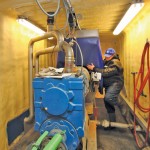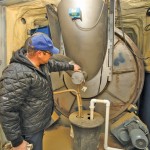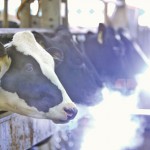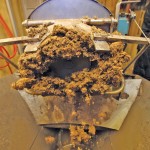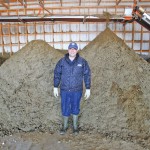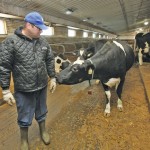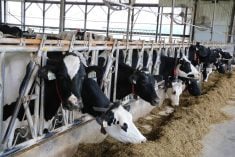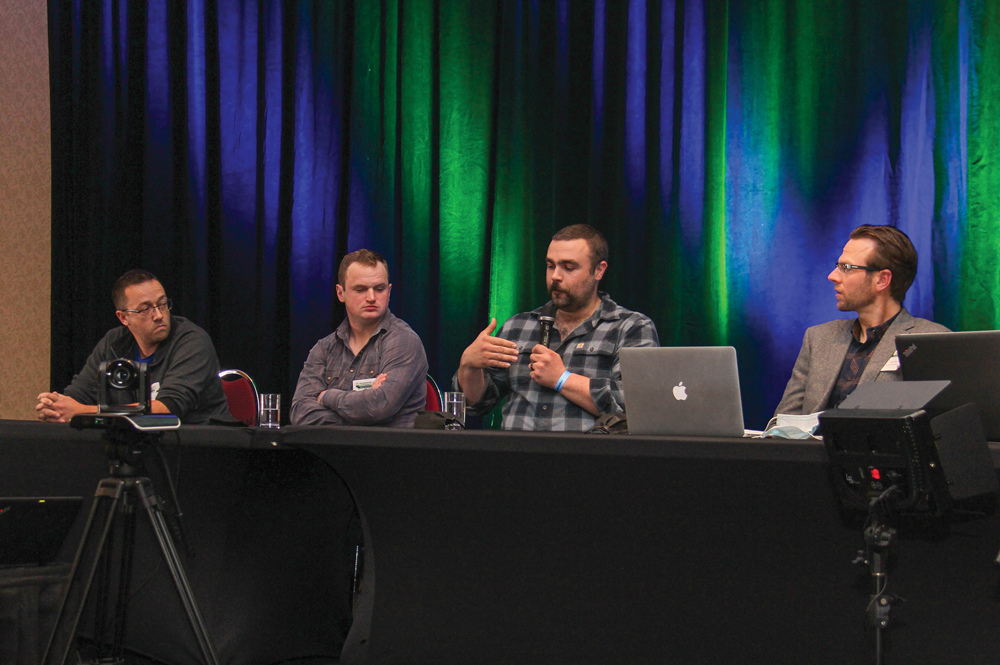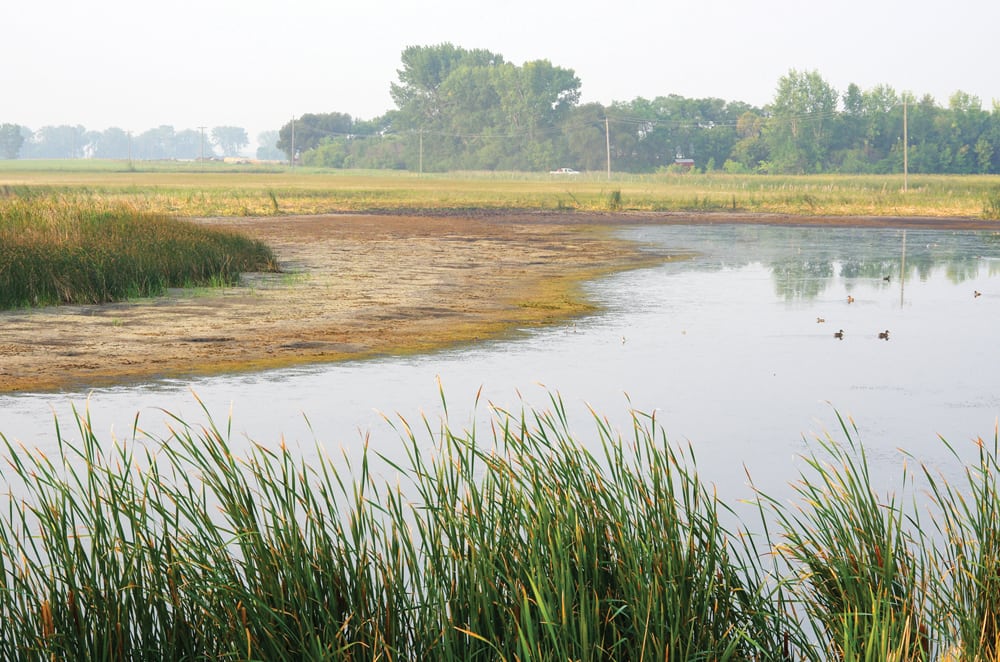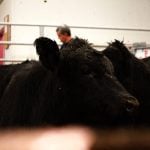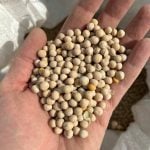Henry Holtmann reaches into a large pile of what looks like a cross between wood shavings and down feathers, then lets the soft fibres slip through his hands.
“When you grab it in your hand, it’s like a brown fluff, that’s the best way to describe it; it’s not like sand and it’s not like straw,” said the dairy farmer, as he described the new bedding product being produced at Rosser Holsteins, just northwest of Winnipeg. “It’s almost like a wet shavings sort of feel to it, and when you squeeze it in your hand, it doesn’t stick, it falls out, even though it’s at 30 per cent moisture, so it’s very soft.”
Read Also
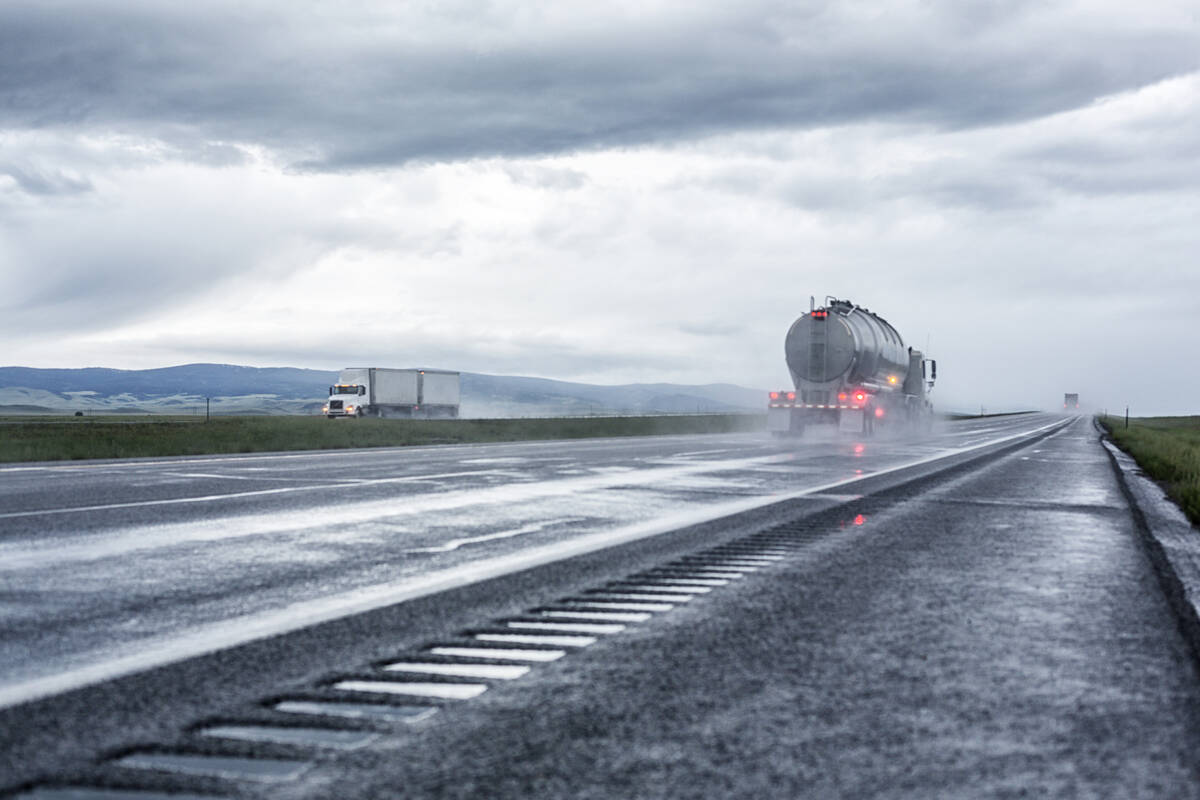
Province pledges funds to CentrePort Canada
The Manitoba government has pledged $450,000 towards projects at inland port CentrePort Canada.
But only 30 hours earlier, this high-quality bedding for dairy cows was something not so nice to touch — manure.
The farm is the first in the province to install and operate what is called a bedding recovery unit.
“It’s not a cheap venture to get into, but for us, the benefits have a lot of merit, especially with the animal care side of things coming down,” Holtmann said, adding that the fluffy bedding has done an excellent job of keeping animals both comfortable and clean.
It also means that he isn’t buying or baling straw to bring into his barns, although some straw is still used for calves and calving.
Clay Sawka, nutrient management specialist at Manitoba Agriculture, Food and Rural Development is working with Rosser Holsteins as it studies the system’s impact on nutrients and bacteria, with the help of funding from Growing Forward 2.
“If we can remove some of that phosphorus that’s in the solid portion of the manure and reallocate that around the farm, that helps. You still have the nitrogen-rich liquid material, so your crops are still getting the good nitrogen fertilizer,” Sawka said. “As well, you’re not bringing in as much straw, so you don’t have to import nutrients onto the farm — or spend that time and effort baling. Straw does a good job in the field, so if you leave it in the field that’s great.”
The bedding recovery unit works by separating manure solids from liquids using a screw press, the solids are then put into a rotating drum that allows the material to heat to around 70 C. Liquids go off to traditional manure storage to be land applied, while the fibrous solids emerge with all the harmful bacteria killed off.
- Henry Holtmann adjusts a piece of equipment on his bedding recovery unit.
- Henry inspects a rotating drum full of manure solids.
- Cows exhale in the cool air while waiting to be milked.
- Bedding material being extruded.
- Henry stands in front of piles of bedding made from manure.
- Henry Holtmann is approached by a curious cow in a barn where bedding recovered from manure is used.
Ongoing research at the farm is aimed at answering remaining questions about the process, particularly, what bacteria remains after the heating process and how does the process affect nutrient loads?
“But the biggest question that dairymen have, is, is it safe for my cows… and all the studies we’ve seen, and the producers we’ve met who are using it, say it is,” said Holtmann. “But we need to see how it works in our cold-climate conditions and so forth.”
“The next thing I’m particularly interested in is to see how much nutrients are actually being removed from that liquid stream,” Sawka said.
There are also economic aspects that bear further investigations.
Depending on a farm’s existing infrastructure, installing a bedding recovery system can cost between $500,000 and $700,000, said Sawka. How that compares to cost offsets, sustainability and time saved needs further examination.
Holtmann said he would also like to investigate the possibility of marketing surplus bedding material.
“We’re really interested in solving that question, because right now we do produce about 25 per cent more than we require, and right now we’re just putting it on our land, but maybe there is an opportunity there for other farms to use it as premium bedding material,” he said.
Currently, bedding recovery units are quite common in parts of the United States. But they have been slow to catch on in Canada.
However, that may be changing. Holtmann notes a second farm in Manitoba is about to begin operating a similar system and other dairy producers have expressed interest.
“It’s looking to do a pretty good job, production numbers are actually going up in the barn, so they’re producing more milk on average, for sure not less and it’s doing a good job on cow comfort,” Sawka said. “So from that perspective the BRU does seem to be living up to expectations.”


